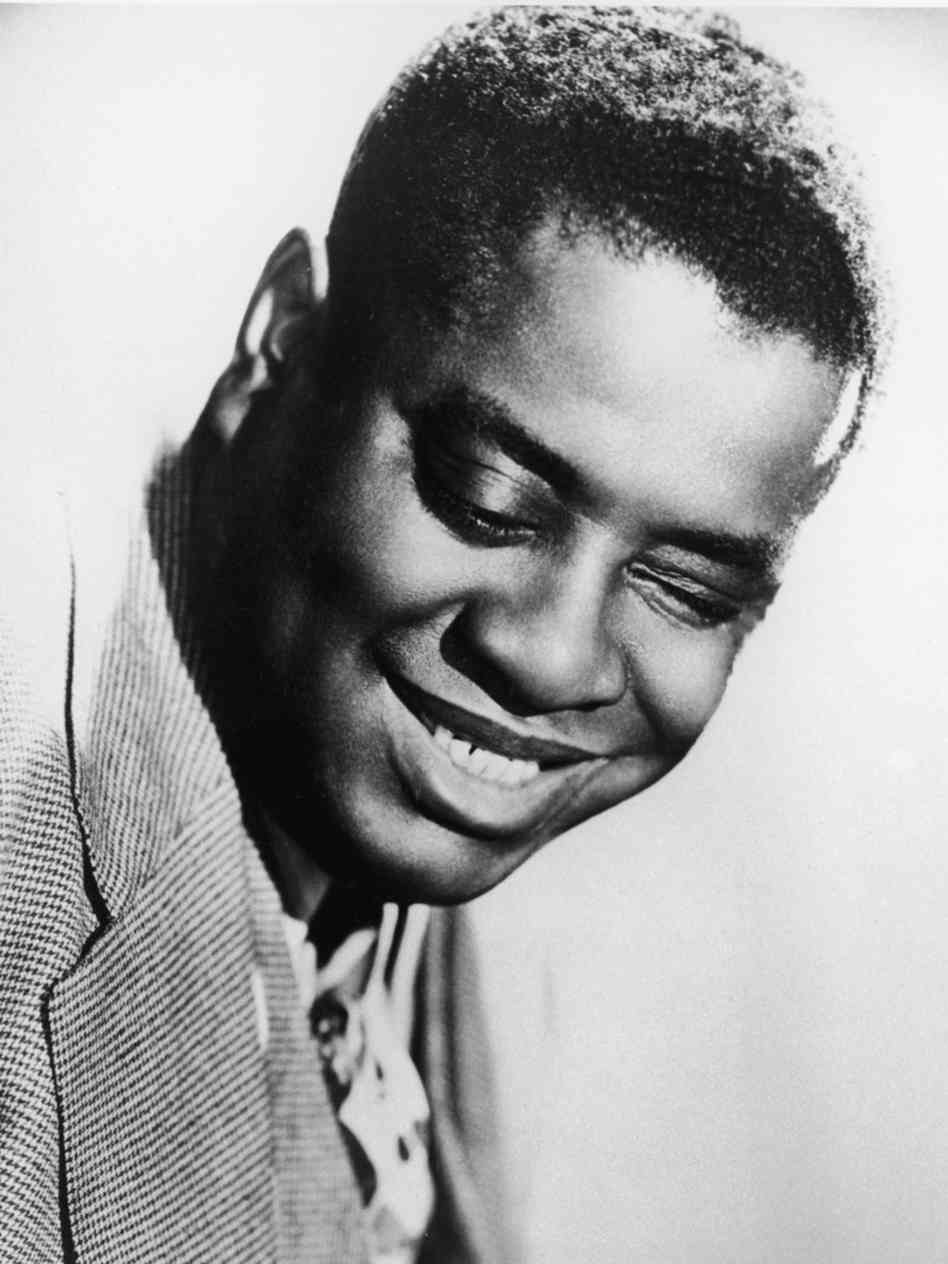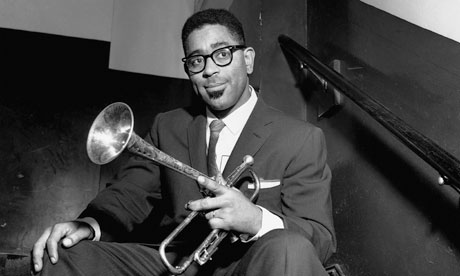
Art Tatum was a jazz pianist and virtuoso who was nearly blind. He is acknowledged by many to be one of the greatest pianists of all time, revolutionizing the role piano played in jazz. Tatum drew upon stride piano to build up a style uniquely his own, playing with swinging pulse and futuristic improvisational abilities. His approach to jazz music completely changed the way piano was played: He reharmonized melodies by altering the underlying chord structure, used innovative chord extensions, and dissonance to his benefit. All of these were characteristics of bebop music, happening some 10 years before the first bebop records were even made. He was noted also for having exquisite technique, to a point where he was able to play some of the most difficult passages at high velocity, and still present the illusion that he was hardly moving his hands.

Some of the most complex and dissonant harmonies can be found in the repertoire of pianist and composer Thelonious Monk, one of the most important contributers to bebop music. His somewhat eccentric persona also helped popularize jazz. Known for his “hip” style in suits, hats and sunglasses, Monk, in essence, personified the uniqueness and idiosyncrasy that was his music. His novel, improvisational approach helped to create a plethora of jazz standards like “Epistrophy,” “Blue Monk,” “Straight, No Chaser,” “I Mean You,” and “Well, You Needn’t.” Monk’s style was commonly characterized by his innovative approach to piano playing which included percussive attacks and abrupt pauses. He often got up from the piano during performances and danced a bit while the other members of the band continued playing. Thelonious Monk remains one of the most celebrated and renown pianists in any genre.

American jazz trumpet player, singer, composer and bandleader, Gillespie was very significant in the development of bebop and modern jazz. His trumpet playing influenced such players as Miles Davis, Clifford Brown and Fats Navarro. After spending time in Cuba and coming back to America, Gillespie also greatly helped in the advancement of Afro-Cuban Jazz. He was characterized by his horn rimmed glasses, bent trumpet and uniquely puffy cheeks when playing. A great improviser, Dizzy added a certain layer of harmonic complexity to his music, something previously unknown in jazz. Songs like “Salt Peanuts” and “Goovin’ High” were very different, both harmonically and rhythmically, when compared with the sounds of his contemporaries. Remaining true to bebop his entire career, Gillespie is remembered as one of the most influential trumpet players in history.

Max Roach is considered to be one of the greatest drummers in history, and was a renowned bebop pioneer. He is, along with a select few, essentially responsible for the modern style of jazz drumming. Roach was also involved greatly in the Civil Rights movement, creating an album with Oscar Brown Jr. and Coleman Hawkins called “We Insist! – Freedom Now,” commemorating the 100th anniversary of the signing of the Emancipation Proclamation. Roach performed with amazing style, able to play entire shows solo, showing that, given his incredible skill, he could play and completely satisfy an entire audience while fulfilling the requirements of a solo performance. Roach, completely in-tune with the bebop scene, played with artists like Clifford Brown, Miles Davis, Charlie Parker, Dizzy Gillespie, Duke Ellington and Charles Mingus, ensuring a vibrant and successful career.
.jpg)
“Lady Day” was perhaps the most exceptional popular music singer of the 20th century. She wrote few songs, but when she sang, she took on a deep, personal and intimate approach. Her vocal style and intonation was inspired greatly by the sound of the instruments she heard and was filled with a profound intensity. In that manner, she developed a new style, incorporating the manipulation of phrasing and tempo. Her recording of the song “Strange Fruit” is considered one of the most important songs in history, because of it’s powerful theme and topic, and because of Holiday’s powerful performance. She received multiple posthumous Grammy Hall of Fame awards and Grammy Best Historic Album awards for her work. Although her delivery may have been somewhat thin and her range fairly limited, there is no doubt that her voice was more powerful than any at the time could have hoped to be.
.jpg)
John Coltrane is virtually synonymous with the word “cool.” At the forefront of hard bop, Coltrane, a composer and saxophone virtuoso, made serious headway into becoming one of the most important figures in jazz music. Coltrane had a harsh, strident sound and played with extreme intensity. He was able to solo and improvise with astounding power, creating “sheets of sound.” Playing tenor and soprano sax, Coltrane could either play with a smooth melodic sound, or an unmatched intensity. His compositions, along with Miles Davis, helped redefine be-bop, with the introduction of modal harmony, and the “Coltrane Changes.” Coltrane, a figurehead of avant-garde jazz, was also prolific in his recordings, making about 50 albums in his career as band leader. He has been recognized extensively, with an induction in the Downbeat Jazz Hall of Fame, a Grammy Lifetime Achievement award, a Grammy for “Best Jazz Solo Performance,” and a church which worships him as a saint.
On April 23, 1971, a coalition of Black and white students at Columbia University occupied five buildings on campus, effectively shutting down university operations for the remainder of the academic year. The protest was part of a broader student-led movement challenging institutional racism, war involvement, and the university’s policies on minority admissions and community relations. Demands included increased Black student enrollment, better support for Harlem residents, and opposition to Columbia’s ties to military research. The building seizures echoed earlier 1968 protests and symbolized the radical student activism of the era, combining racial justice with anti-establishment resistance.
On April 23, 1971, William V.S. Tubman, the 19th President of Liberia, died while still in office after 27 years of leadership—the longest presidential tenure in Liberian history. Known as the “father of modern Liberia,” Tubman championed a policy of national unification, expanded suffrage, and encouraged foreign investment through his “Open Door” policy. He played a pivotal role in positioning Liberia as a symbol of Black independence and leadership during a time of African decolonization. His death marked the end of a transformative era, leading to the succession of Vice President William R. Tolbert.
On April 23, 1955, the United States Supreme Court refused to review a lower court ruling that upheld the legality of racial segregation in intrastate bus travel. This decision came despite growing public pressure and mounting legal challenges against segregation in public transportation. While the Court had ruled against segregation in interstate travel in previous years, this refusal signaled that Jim Crow laws still had firm legal footing within individual states. The move sparked outrage among civil rights activists and helped galvanize momentum for what would soon become the Montgomery Bus Boycott later that year. The incident serves as a reminder that legal progress often unfolds in uneven steps.
On April 23, 1951, more than 450 Black students at Robert Russa Moton High School in Prince Edward County, Virginia, staged a courageous walkout to protest their overcrowded and underfunded school. Led by 16-year-old Barbara Johns, the students demanded equal educational facilities, challenging the “separate but equal” doctrine that had long upheld school segregation. The protest sparked national attention and drew the support of the NAACP, whose lawyers—including Oliver Hill and Spottswood Robinson—filed suit on the students’ behalf. Their case became one of five consolidated into the landmark Brown v. Board of Education (1954), which ultimately led the U.S. Supreme Court to declare racial segregation in public schools unconstitutional.
On April 23, 1913, the National Urban League was officially established in New York City through the merger of three organizations focused on improving the economic and social conditions of African Americans. Founded during the Great Migration, the League aimed to help Black Americans transition from rural life in the South to urban environments in the North by offering job training, housing support, and advocacy. Under early leadership such as George Edmund Haynes and later Whitney M. Young, the League became a powerful civil rights force, promoting economic self-reliance and racial equity. Today, it remains one of the oldest and most influential civil rights organizations in the United States.
On April 23, 1872, Charlotte E. Ray made history by becoming the first African American woman licensed to practice law in the United States. A graduate of Howard University School of Law, she was also the first woman admitted to the D.C. Bar. Practicing in Washington, D.C., Ray specialized in commercial law and was widely respected for her legal acumen despite the barriers of race and gender in Reconstruction-era America. Her trailblazing achievement opened doors for future generations of Black women in the legal profession.
On April 23, 1856, Granville T. Woods was born in Columbus, Ohio. Often called “The Black Edison,” Woods would go on to become one of the most prolific Black inventors in American history, securing over 35 patents during his lifetime. His groundbreaking innovations included a steam boiler furnace, a telephone transmitter, an egg incubator, and the automatic air brake used in rail systems — a contribution that greatly improved railway safety and efficiency. Despite facing systemic racism, Woods often defended his patents in court and won, establishing his legacy as a brilliant engineer whose ideas shaped modern transportation and communication.
© 2025 KnowThyHistory.com. Know Thy History